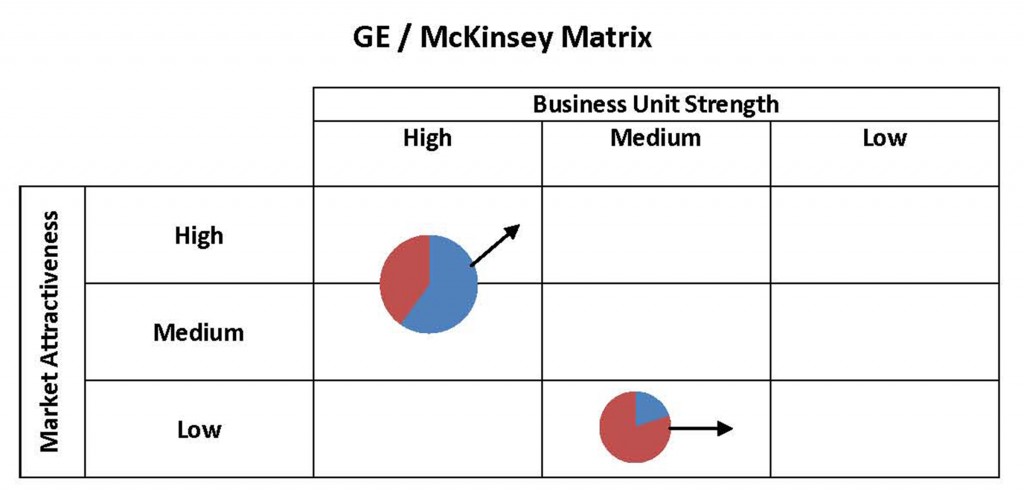Do your homework before using strategy models
4/9/12 / Leo Lewis

The following is a graphic example of the GE/McKinsey matrix, a fairly well-known consulting framework that allows for visual representation of a market(s) that a company serves and where these market(s) are positioned relative to key factors such as level of market attractiveness (high, medium or low) and relative strength of the business unit (high, medium or low) serving these markets. It should also be noted that the size of circles represent the relative size of each market that the company serves, along with a percentage portion of each circle representing the company’s share of that market. Arrows show the anticipated future direction the market will move based on factors on the axes.

Simple enough to interpret. A combined high market attractiveness and high business unit strength is a place a company wants to be, and even more so if the market size is relatively large and its market share is high. Ultimately, where a business unit stands on this matrix influences an “invest” or “divest”-type decision in the larger context of a company’s business portfolio management. This is a tough decision, with significant implications. So you want to be right.
The questions that naturally arise have to do with how to rate the attractiveness of a market or the strength of a business unit in this context. It is up to a company’s discretion as to what factors are used and the weighting they are given based on relative importance level. Regardless, some typical factors that go into “market attractiveness” might include market size, market growth rate, competitive intensity, entry barriers, etc. Note that these and others typically used are all factors that are naturally uncovered by a proper External Situation Assessment. On the other hand, common factors that go into determining “business unit strength” many times include brand strength, management strength, market share, market share growth, product quality, marketing capability, etc. Note that these and other similar factors are most effectively and definitively determined through an Internal Situation Assessment.
Granted, not all companies are conglomerates with different business lines like GE. However, it is safe to say that all companies have finite resources and many possible uses of these resources. Even if a company only has one business line, decisions about pursuing potential new markets or offering new products or services must still be informed by an analysis of its current market attractiveness and business unit strengths. In either case, a big investment (or divestment) decision requires doing some homework and due diligence to make sure you get it right.
Stay tuned for a future white paper from Corona’s Insights for Strategic Marketing on data- and information-driven Internal and External Situation analysis and how marketing goals and strategy are ultimately dependent on this type of analysis.
To learn more about how Corona Insights’ can assist you with your strategic marketing visit our Insights for Strategic Marketing page or contact us.